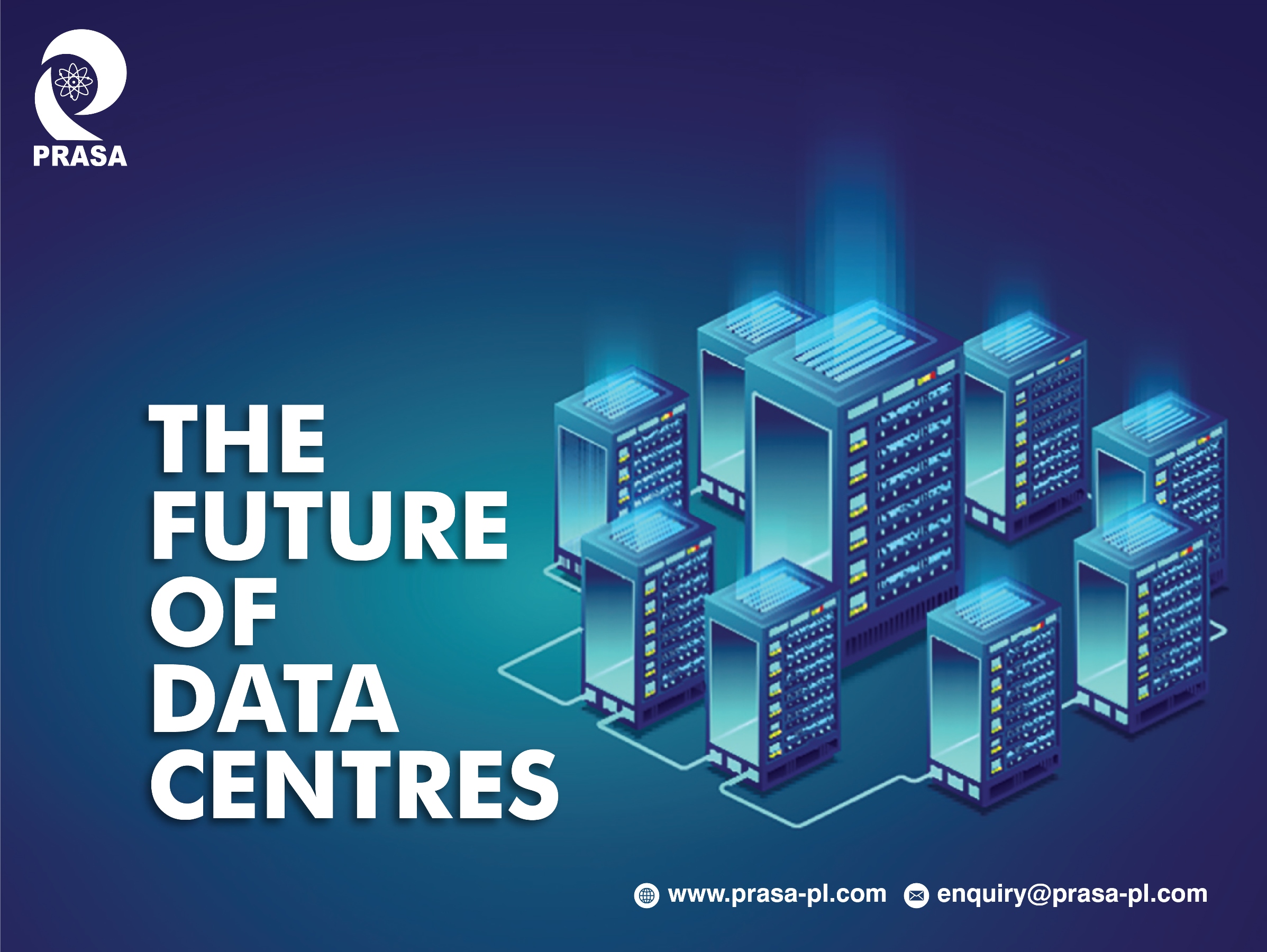The real technological backbone powering the digital ecosystem is the data center – a fundamental growth engine with the capacity to enable the new set of business ideas.
A data deluge (growth of about 6 times between 2018 to 2025) is a glaring reality for the world, and Data Centers will need to keep up with the exploding data needs. The future Data Centers will share much of the traits with existing ones; however, they will be tailored to new and evolving use cases in the digital ecosystem.
Much of the change will happen on the software side, i.e., SDx (Software-defined everything) – allowing critical network functions to shift from its hardware layer to the software layer. However, agile and scalable infrastructure will be a prerequisite to enable SDx.
Once the technological trends and macro forces of digital ecosystem come into play more aggressively, Data Centers will evolve and look differently. They are likely to change on these parameters:
Building Management System (BMS)
Data Centers of the future will largely depend on extensive Building Management Systems (BMS) to automate power, water, and other operational and management tasks in the facility.
BMS will be configured to provide uninterrupted water and power supplies, air conditioning, telecommunications, fire protection, and surveillance options. DData Centers will depend on BMS to configure and optimize the efficiency of processes.
Li Batteries for Power Backup
Power is a massive concern for the future of Data Centers. The focus is already on energy efficiency and use of renewable sources. Future Data Centers will use a mix of sources to provide power to Data Centers. Solar is likely to lead the mix, followed by other renewable sources.
Traditionally lead-acid batteries coupled with UPS systems have been the default source of power backup. Problem with lead batteries is that they need a lot of space, need a lower temperature, and frequent replacement.
On the other hand, Li batteries have a longer life span, longer shelf life, carry less weight, accommodate higher temperatures, and are smaller in size. Innovation in Li Batteries has made them increasingly safer, smaller and capable of operating in a wide temperature range.
Recycling
The Data Centers industry has a strong stance on sustainability. Upgrading to new and better technology in Data Centers is a constant process; hence, properly recycling old hardware is a crucial step towards sustainability. The shift towards energy efficiency, water consumption and carbon emissions metrics are already in place. Data Centers will also contribute to clean energy by recycling some of the electricity they produce.
The implementation of three R’s (Reduce, Reuse, Recycle) will be witnessed on a much larger scale.
- Reduce – A reduction in energy consumption and carbon footprint
- Reuse – Facilitating the redeployment of reused components
- Recycle – Both PUE and WUE metrics for measuring water efficiency and recycling electricity produced
Recycling will play a substantial role in ensuring sustainability. Implementation of cooling systems to use and reuse wastewater will be a standard process.
Automation
Managing the workflow including the bulk of Data Center operations are currently performed by human operators. In the future, data center automation will be a standard process. A centralized software solution will deliver Data Centre automation including scheduling, managing and monitoring tasks. The future of Data Centers will bring automation to routine processes such as reporting, updating and patching.
Edge Computing
Location is key, and edge computing is the answer as it primarily brings computing power and storage capabilities closer to where data is collected. It allows lower application latency, higher capacity and reduced network costs.
Artificial Intelligence (AI)
The surge in the amount of data is exponential, and future Data Centers will need to take measures to keep up with the current efficiencies. Implementing AI in innovative ways will drive efficiencies while keeping costs down. In the future, AI will:
- Improve energy efficiency in Data Centers
- Enhance data monitoring
- Boost server optimization
- Troubleshoot problems quickly
Storage
- At present, HDDs are the primary storage devices in Data Centers. In the coming future, once the price per unit of SSDs fall, they will become more prevalent in data centers. In the storage department, technology is coming out strongly, and innovations such as liquid storage can provide higher capacity at a comparatively lower cost.
Architecture
The next step is the evolution of virtualization, where the entire infrastructure will be delivered as a service (IaaS). It will result in cost reduction as software-defined everything (SDx) is likely to dominate future Data Centers.
As a turnkey solution, Hyperconverged Infrastructure (HCI) will enable storage, computing, and networking in one single unified system. It is a scale-out architecture that requires minimal integration and works by delivering end-to-end storage and computing functions through commodity hardware.
Traditional Data Centers with HCI will provide what cloud does, i.e., flexibility, scalability, and simplicity. However, the key difference will be without losing control of the ability to scale.
More Data Processing in Real-Time
The rapid digitalization is leading to an intersection of next-gen technologies, including artificial intelligence, IoT, software-defined storage, machine learning, big data, and augmented reality. IDC predicts that close to 30% of all the world’s data will need real-time processing by 2025. Amidst the rapid evolution of the digital economy, one thing is certain – despite future changes, Data Centers will remain a key enabler in driving business and technological transformation.
Prasa Infocom & Power Solutions
continues to innovate and provide exceptional support to customers through this transformational journey. We host mission-critical infrastructure, and when stepping into the future, our state-of-the-art data centres will incessantly meet the changing and dynamic demands.


